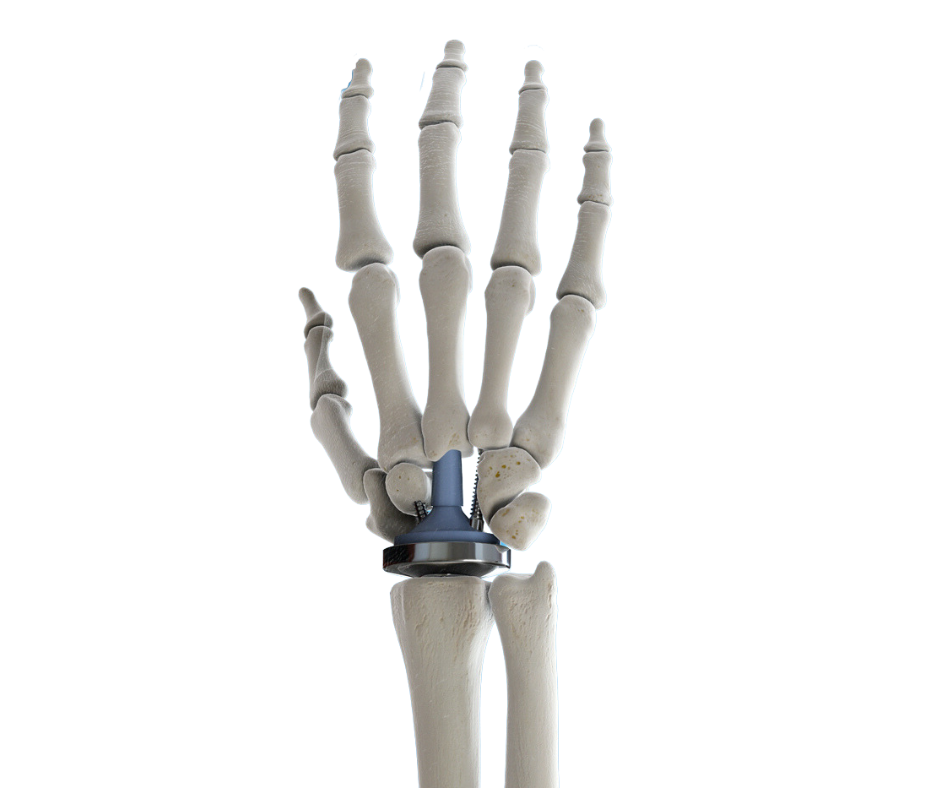Wrist Replacement

Introduction
The wrist is a vital joint that enables us to perform everyday tasks and activities. However, when the wrist joint deteriorates due to conditions like arthritis, it can lead to severe pain and disability. In such cases, lifestyle modifications and non-surgical treatments may provide relief, but when these options fail, surgical intervention becomes necessary. Two surgical procedures commonly used for treating degenerative joint diseases in the wrist are wrist fusion (wrist arthroscopy) and total wrist replacement (wrist replacement or arthroplasty). In this comprehensive guide, we will explore the details of wrist replacement surgery, including its benefits, procedure, recovery, and potential risks.
Understanding Wrist Replacement Surgery
Wrist replacement surgery, also known as total wrist arthroplasty, is an advanced procedure that involves replacing a severely arthritic wrist joint with an artificial joint made of metal and plastic components. This procedure aims to relieve pain and restore function in individuals who have not found relief through conservative treatments. The prostheses used in wrist replacement surgery are designed to replicate the natural movement and function of a healthy wrist joint. The implants are typically made of alloy metals with a polyethylene spacer, which allows smooth articulation between the bones.
Indications for Wrist Replacement Surgery
Wrist replacement surgery is recommended for individuals suffering from debilitating wrist pain and disability caused by conditions such as rheumatoid arthritis and osteoarthritis. These conditions can lead to the deterioration of the wrist joint, causing pain, stiffness, swelling, and a significant reduction in range of motion. When nonsurgical treatments like activity modification, pain medications, splinting, and physical therapy fail to provide adequate relief, wrist replacement surgery may be considered.
The Surgical Procedure
Wrist replacement surgery is performed under general anesthesia and typically takes less than two hours. The procedure involves several key steps to ensure the successful implantation of the artificial joint. Firstly, an incision is made over the back of the wrist, allowing access to the joint. The damaged joint surfaces and, in some cases, the first row of carpal bones are removed. The radius bone is then prepared by hollowing it out to accommodate the radial component of the prosthesis, which is fixed inside using bone cement. Depending on the prosthesis design, the carpal component is placed in the remaining row of carpal bones or the third metacarpal bone of the hand. The carpal bones may also be linked or fused together to enhance the stability of the prosthesis. Finally, a plastic spacer is inserted between the metal components, and the joint capsule, muscles, and tendons are repaired before closing the incision.

Recovery and Rehabilitation
Following wrist replacement surgery, patients typically spend a few weeks in a cast to protect the surgical site and promote healing. Pain medications may be prescribed to manage any discomfort during this initial period. Once the cast is removed, a splint is usually worn for an additional few weeks to support the wrist during the early stages of recovery. Physical therapy plays a crucial role in the rehabilitation process, helping patients regain strength, flexibility, and range of motion in the wrist joint. Hand therapy exercises are performed to improve grip strength, dexterity, and overall hand function. It is important to follow the post-operative instructions provided by the surgeon and attend all recommended therapy sessions to achieve optimal results.

Benefits of Wrist Replacement Surgery
Wrist replacement surgery offers several significant benefits for individuals suffering from severe wrist arthritis. By replacing the damaged joint with an artificial one, this procedure can alleviate pain, reduce stiffness and swelling, and restore the ability to perform daily activities without discomfort. Many patients experience a remarkable improvement in their arthritis pain almost immediately after surgery. The prosthetic joint allows for a functional range of motion, enabling individuals to carry out everyday tasks, including driving and other activities that require wrist movement.
Risks and Complications
While wrist replacement surgery is generally safe and successful, there are potential risks and complications associated with any surgical procedure. These may include infection, fracture of the wrist bones, dislocation of the wrist, damage to nerves or blood vessels, blood clots, loosening or wear of the implant, and failure to relieve pain. It is essential to discuss these risks with your surgeon and follow all post-operative instructions to minimize the likelihood of complications.
Long-Term Outlook
Wrist replacement surgery is a long-lasting solution for individuals with severe wrist arthritis. The lifespan of a wrist prosthesis typically ranges from 10 to 15 years, after which a revision surgery may be required. It is important to note that certain activities that exert excessive stress on the joint or increase the risk of falling onto outstretched hands should be avoided after surgery. Regular follow-up appointments with the surgeon are essential to monitor the function and condition of the artificial joint.
Wrist replacement surgery cost
At the lower end of the spectrum, wrist replacement surgery in India starts from approximately 1.4 lakh (2000 USD). This base cost covers essential medical services and facilities required for the procedure. On the higher end, patients can expect to pay up to 7 lakhs (7500 USD) for a wrist replacement surgery in India. This upper limit typically includes additional factors such as the complexity of the procedure, the expertise of the medical team, advanced surgical techniques, and the overall quality of care provided.
Conclusion
Wrist replacement surgery is a highly effective option for individuals suffering from severe wrist arthritis that has not responded to conservative treatments. By replacing the damaged joint with an artificial one, this procedure can alleviate pain, improve function, and enhance the overall quality of life. If you are experiencing debilitating wrist pain and reduced mobility, consult with an orthopedic specialist to determine whether wrist replacement surgery is the right option for you. With advancements in surgical techniques and prosthetic designs, wrist replacement surgery offers hope for individuals seeking long-term relief from wrist arthritis.

